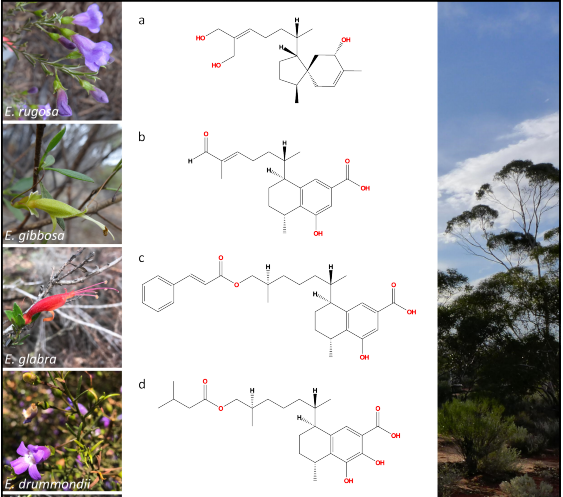New paper on the chemistry and evolution in Eremophila is submitted
A new paper with the title “Navigating through chemical space and evolutionary time across the Australian continent in plant genus Eremophila” has been submitted to Nature Plants and posted on bioRxive.
This project is financially funded by the Novo Nordisk Foundation Interdisciplinary Synergy program.
Please find more information about the paper below:
Authors: O. Gericke, R.M. Fowler, A.M. Heskes, M.J. Bayly, S.J. Semple, C.P. Ndi, D. Staerk, C.J. Loland, D.J. Murphy, B.J. Buirchell and B.L. Møller

Abstract: Eremophila is the largest genus in the plant tribe Myoporeae (Scrophulariaceae) and exhibits incredible morphological diversity across the Australian continent. The Australian Aboriginal Peoples recognize many Eremophila species as important sources of traditional medicine, the most frequently used plant parts being the leaves. Recent phylogenetic studies have revealed complex evolutionary relationships between Eremophila and related genera in the tribe. Unique and structurally diverse metabolites, particularly diterpenoids, are also a feature of plants in this group. To assess the full dimension of the chemical space of the tribe Myoporeae, we investigated the metabolite diversity in a chemo-evolutionary framework applying a combination of molecular phylogenetic and state-of-the-art computational metabolomics tools to build a dataset involving leaf samples from a total of 291 specimens of Eremophila and allied genera. The chemo-evolutionary relationships are expounded into a systematic context by integration of information about leaf morphology (resin and hairiness), environmental factors (pollination and geographical distribution) and medicinal properties (traditional medicinal uses and antibacterial studies) augmenting our understanding of complex interactions in biological systems.
You can find it here: https://doi.org/10.1101/2020.11.02.364471
